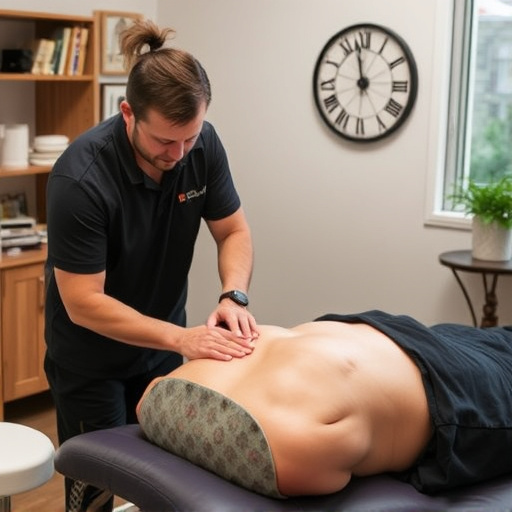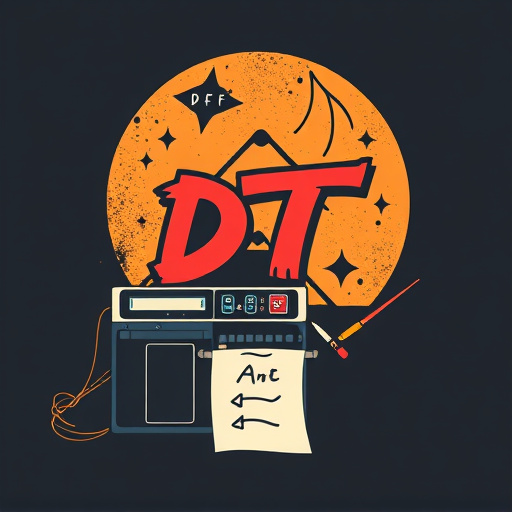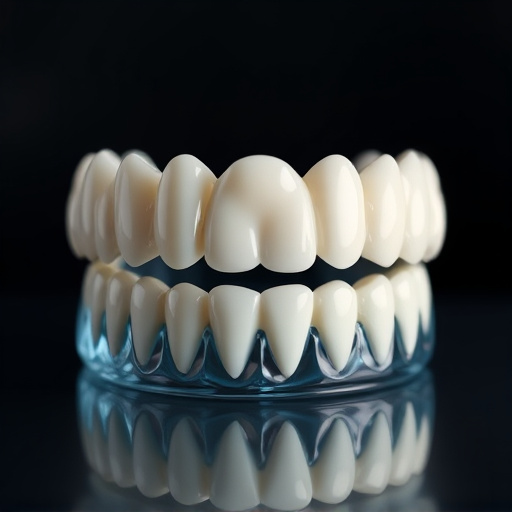Shockwave therapy, initially developed for plantar fasciitis, has evolved into a versatile non-invasive treatment option addressing various conditions. It uses dynamic pressure waves to stimulate tissue regeneration, offering relief from sports injuries, tendinopathies, and muscle strains. Recognized as a safe alternative to cortisone injections or surgery, it's gaining popularity among athletes and individuals with chronic muscle and tendon disorders, aiming for faster recovery timelines. Recent research explores its potential in tissue regeneration, bone healing, cancer treatments, stress-related conditions, and mental health disorders, making it a promising game-changer in healthcare, including chiropractic care.
“Explore the transformative potential of shockwave therapy beyond its conventional use in treating plantar fasciitis. This innovative approach has shown remarkable results for various conditions, offering more than just pain relief. From muscle injuries to tendonitis, and even as a non-invasive alternative for tissue regeneration, shockwave therapy is revolutionizing healthcare.
Dive into our comprehensive guide to discover the mechanisms behind its success, future applications, and current research, illuminating the vast possibilities of this game-changing treatment.”
- Shockwave Therapy for Conditions Other Than Plantar Fasciitis
- Mechanisms and Benefits Beyond Pain Relief
- Potential Future Applications and Current Research
Shockwave Therapy for Conditions Other Than Plantar Fasciitis

Shockwave therapy, initially developed to treat plantar fasciitis, has emerged as a versatile non-invasive treatment option for various conditions. Beyond its established role in alleviating heel pain, shockwave therapy is now being explored and utilized for sports injuries, particularly in accelerated recovery of muscle and tendon wounds. The dynamic pressure waves stimulate tissue regeneration, enhancing the body’s natural healing process. This modality has shown promising results in treating tendinopathies, muscle strains, and even post-accident rehabilitation, offering an alternative to conventional therapies like cortisone injections or surgery.
With its ability to penetrate deep into tissues, shockwave therapy provides targeted joint pain relief by reducing inflammation, promoting angiogenesis, and stimulating fibroblast activity. This makes it a valuable tool for athletes and individuals suffering from chronic muscle and tendon disorders, aiming to restore mobility and functionality without invasive procedures. The growing body of research supports the safe and effective use of shockwave therapy for conditions other than plantar fasciitis, opening doors for improved recovery timelines in sports injuries and post-traumatic rehabilitation.
Mechanisms and Benefits Beyond Pain Relief

Shockwave therapy, initially developed to treat plantar fasciitis, has emerged as a versatile tool with mechanisms and benefits extending far beyond pain relief. The non-invasive nature of this treatment involves delivering focused sound waves to damaged tissues, stimulating healing responses at the cellular level. This process not only alleviates pain but also promotes tissue regeneration, making it effective for various conditions.
Beyond its application in managing chronic pain relief and pain management, shockwave therapy has shown promise in personalized treatment plans for musculoskeletal disorders. Its ability to enhance blood flow and stimulate the release of growth factors can accelerate the healing process, reduce inflammation, and improve overall function. This makes it a valuable addition to rehabilitation programs, offering hope for those seeking lasting solutions beyond temporary relief.
Potential Future Applications and Current Research

The potential applications of shockwave therapy extend far beyond its established use for plantar fasciitis. Current research is exploring its efficacy in various medical fields, demonstrating its versatility as a non-invasive treatment option. For instance, studies are investigating the use of shockwaves in tissue regeneration, bone healing, and even cancer treatments, offering promising results. This innovative approach has shown potential to revolutionize care for individuals suffering from chronic joint pain and injuries stemming from accidents or wear and tear, such as car accident injury care.
Beyond its physical benefits, shockwave therapy is also being studied for its psychological impact. Some research suggests it may aid in managing stress-related conditions and mental health disorders. These findings underscore the growing interest in integrating shockwave therapy into various healthcare practices, including chiropractic treatment, to provide comprehensive care tailored to individual needs. As research continues to uncover new possibilities, the future of shockwave therapy looks bright, with potential to transform how we address a range of health concerns.
Beyond its well-documented success in treating plantar fasciitis, shockwave therapy has shown promise in addressing a variety of conditions. The mechanisms behind its effectiveness extend beyond mere pain relief, offering a multifaceted approach to healing. As research continues, we can expect to uncover even more potential applications for this innovative treatment, revolutionizing the way we manage various musculoskeletal disorders. For individuals seeking alternative solutions, shockwave therapy presents a compelling option with encouraging outcomes.














